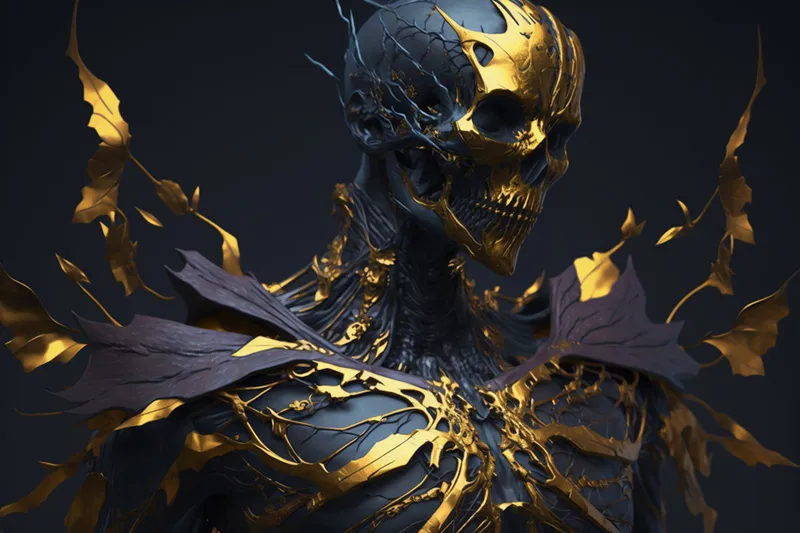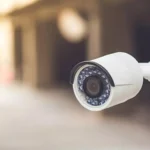In recent years, artificial intelligence (AI) has made significant strides, infiltrating every aspect of life, including art. One of the most chilling developments in this realm is AI art horror IV needles, a blend that taps into deep-seated fears of medical interventions while showcasing the eerie creativity of AI. Combining the clinical precision of IV needles with horror art generated by artificial intelligence, this niche genre evokes visceral reactions, leaving viewers unnerved and enthralled.
This article will explore the chilling world of AI art horror IV needles, examining its technological underpinnings, cultural significance, and why it resonates with our deepest anxieties.
The Intersection of AI and Horror Art
The Evolution of AI Art in Horror
AI-generated art has seen rapid advancements over the past decade, with tools such as Generative Adversarial Networks (GANs) allowing machines to create lifelike images from extensive datasets. While AI has been employed to produce a wide range of artistic styles, its use in the horror genre has created something uniquely unsettling. AI art horror IV needles exemplifies this disturbing fusion of technology and terror.
GANs consist of two neural networks—a generator and a discriminator—that learn from each other, resulting in increasingly sophisticated creations. In horror art, these algorithms are trained on data sets that include terrifying images, distorted faces, and medical symbols like IV needles. The result is an art form that preys on fears both old and new, combining AI’s calculated detachment with the primal human fear of bodily harm.
Why IV Needles Evoke Fear
The fear of needles, specifically IV needles, is widespread and can trigger intense emotional responses. This phobia, known as trypanophobia, arises from several factors, including the anticipation of pain, the sight of blood, and a general aversion to invasive procedures. When needles are depicted in horror art, this fear is magnified. AI art horror IV needles amplifies these anxieties, with AI enhancing the horror by introducing unpredictable and unsettling imagery.
The concept of AI art horror IV needles taps into a primal fear of physical invasion, making the viewer question their own vulnerability. Whether it’s the cold, sterile gleam of the needle or its placement in grotesque, AI-generated distortions of human anatomy, the visual impact is both striking and deeply disturbing.
The Technology Behind AI Art Horror IV Needles
The Role of Generative Adversarial Networks (GANs)
The backbone of AI art horror IV needles lies in GANs. This advanced machine learning technique involves a dual system where one network generates images and another assesses their accuracy. Over time, this iterative process produces images that grow increasingly realistic and unsettling, especially when focused on horror themes like IV needles.
AI does not operate under the same logical constraints as a human artist. This allows it to create disturbing combinations that feel foreign yet terrifyingly real. In the context of AI art horror IV needles, this means that the resulting images could feature distorted, surreal representations of medical settings, unsettling mixtures of human and machine, or even grotesque fusions of needles with twisted flesh.
AI’s Unique Ability to Unnerve
Unlike human artists who may impose certain logical limits, AI’s approach can be startlingly unconventional. In AI art horror, the sterile precision of the needle is often exaggerated or manipulated in ways that would be difficult for a human to conceptualize. The result is an image that defies conventional norms but still taps into our deepest anxieties about medical intervention and bodily autonomy.
The cold, mechanical touch of AI strips away emotional nuances, creating something purely driven by technical execution—making it all the more chilling. This hyperrealistic rendering of IV needles mixed with body horror creates a profound sense of unease.
The Aesthetic Appeal of AI Art Horror IV Needles
Clinical Precision Meets Grotesque Horror
The aesthetic of AI art horror IV needles is a blend of clinical precision and surreal horror. The sterile look of the needle—shiny, metallic, and sharp—is juxtaposed against distorted, AI-generated forms that challenge the viewer’s sense of reality. The starkness of the medical equipment, contrasted with eerie, twisted bodies or unnatural landscapes, produces a visceral reaction.
The sterile nature of IV needles, typically associated with hospitals and safety, becomes an instrument of fear in this context. By distorting familiar medical objects through AI’s bizarre imagery, the resulting art evokes dread and discomfort.
The Uncanny Valley Effect
One reason AI art horror IV needles is so effective at inducing fear is its use of the uncanny valley effect. This phenomenon occurs when something appears almost human but is just different enough to create discomfort. In AI art horror IV needles, the human forms surrounding the IV needle may appear lifelike but subtly distorted, tapping into this discomfort.
Whether it’s the slight elongation of limbs, unnatural skin textures, or the twisted placement of the needle in these AI-generated bodies, the result is deeply unnerving. The surrealism of AI art adds to the sense of helplessness that many feel when confronted with medical instruments like IV needles.
The Cultural Significance of AI Art Horror IV Needles
Reflecting Technological Anxiety
AI art horror IV needles mirrors a broader societal fear of technological advancement. As AI becomes more integrated into everyday life, the lines between human and machine are increasingly blurred. This has led to anxieties surrounding the role of AI in critical sectors like healthcare, where machines now assist in surgeries, diagnostics, and patient care.
IV needles represent one of the most direct forms of medical intervention, and when combined with AI-generated horror, they symbolize a loss of control to technology. The fear of AI taking over, coupled with the vulnerability associated with medical procedures, creates a powerful emotional response in viewers.
The Rise of AI in Popular Culture
In recent years, AI-generated content has gained significant traction in popular culture. From AI-generated scripts to AI-powered music compositions, the integration of machine learning in creative processes has sparked both fascination and fear. The AI art horror IV needles niche reflects this trend, offering a disturbing glimpse into the possibilities of AI-generated horror.
The internet has been a fertile ground for the dissemination of this kind of art. Platforms like Instagram, DeviantArt, and Reddit have become hubs for sharing and discussing AI art horror IV needles, allowing horror fans to engage with this unique form of digital art.
The Psychological Impact of AI Art Horror IV Needles
Fear of Medical Interventions
For many, the sight of IV needles alone is enough to trigger anxiety. Combine this with AI’s ability to generate unsettling, surreal visuals, and the psychological impact becomes even more pronounced. AI art horror IV needles plays on the viewer’s sense of vulnerability, exploiting common fears associated with pain, blood, and invasive medical procedures.
The needle serves as a powerful symbol of invasion, and when rendered through AI’s cold, detached lens, it becomes even more terrifying. This amplifies the viewer’s sense of powerlessness, forcing them to confront their own fears about medical interventions and the growing role of technology in healthcare.
Amplifying Technological Fears
In AI art horror IV needles, the fear of AI intertwines with the fear of losing control over our own bodies. The concept of machines taking over critical tasks like healthcare evokes a deep-seated dread about the potential consequences of unchecked technological progress. By combining this fear with the visceral discomfort caused by IV needles, this genre of art resonates on both a psychological and emotional level.
The Future of AI Art Horror IV Needles
Advancements in AI Art
As AI technology continues to evolve, the future of AI art horror IV needles is poised to become even more advanced and unsettling. With improvements in machine learning algorithms and neural networks, AI’s ability to create hyper-realistic, deeply disturbing images will only increase. This opens the door to more complex horror art that can challenge even the most jaded of horror fans.
Expanding into New Mediums
The fusion of AI and horror is not limited to static images. AI art horror IV needles has the potential to evolve into virtual reality (VR) and augmented reality (AR) experiences, where viewers can immerse themselves in AI-generated horror worlds. The tactile, immersive nature of VR could make the experience of confronting IV needles in a horror setting even more terrifying, blending art and technology in ways previously unimaginable.
Conclusion
The chilling combination of artificial intelligence, medical imagery, and horror has created a new frontier in digital art. AI art horror IV needles is not just a form of entertainment but a reflection of our anxieties surrounding both healthcare and technological progress. As AI continues to advance, so too will its ability to generate increasingly sophisticated and unsettling works of art, pushing the boundaries of fear in ways we can only begin to imagine.
This fusion of fear and technology is a reminder that even as machines become more intelligent, the human experience of fear remains deeply rooted in primal instincts and vulnerabilities. AI art horror IV needles taps into those fears, offering a haunting glimpse into the future of horror art.


